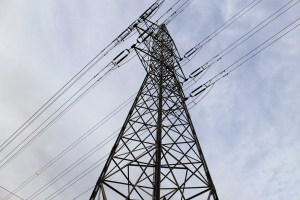Energy Use Assessment for Improved Efficiency
Download Audio VersionEnergy use assessment is done to find out which parts of the home and which household appliances are efficient and whether they use more than necessary. The goal is to achieve optimal use, conserve energy, and minimize damage to the environment.
Step-by-step Assessment
Good thermal insulation is an important requirement for optimal energy use. Check whether there are cracks and holes in the insulation of the floor, ceiling, interior and exterior walls, and attic (if there is such). Cracks and air leaks around the doors, windows, and other spaces reduce energy efficiency. The same is true for the switches and fixtures. If there are air leaks, they have to be sealed. Another solution is to upgrade the thermal insulation of the property. Adding insulation minimizes heat gains and losses during the summer and winter, respectively.

The next step is to check whether the central air conditioning system, cooling and heating appliances, and household appliances are property and regularly maintained. There are energy consumption charts for household appliances that help homeowners to assess efficiency. For example, users can calculate the energy consumption of a computer with a monitor: (270 watts x 6 hours a day x 365 days a year) / 100 = 788 kWh x 11 cents/kWh = $86.72/year. Energy consumption depends on whether you use the device every day or several days a week. For instance, you will pay less if you use a fan 2 hours a day, 100 days a year (200 watts x 2 hours x 100 days) / 1000 = 40 kWh x 11 cents = $4.4/year. The same can be done for other appliances such as the fridge, washer, dryer, and others. If you don’t know the wattage, you can find it on the nameplate, back, or bottom of the device. It denotes the maximum power. If you can’t find the wattage, you can multiply the voltage by the current draw. Get a clamp-on ammeter to determine the current. There are also charts showing the typical wattage of different devices and appliances: clothes dryer (1800 to 5000), washing machine (350 to 500), and so on.
Using Energy Calculators
Alternatively, you can use an electrical energy calculator to assess how your household fares. There are different types of calculators, including energy conversion, cost, and others. You can calculate, for example, how much energy your bulbs use and hence – the cost of lighting. You can choose from different types of lighting such as appliance bulbs, incandescent and fluorescent lights, exterior area lights, night lights, lamps, and others. Fill in the number of bulbs and the number of hours in use. There are also calculators that will help you to calculate the cost of using different household appliances, including your fridge, freezer, coffee maker, microwave oven, and others. You can choose a time frame, from half an hour to one month. Another calculator allows you to find the cost of using your iron, clothes dryer, and washing machine. The only thing you should specify is the number of loads. Other calculators help you to determine the cost of running small appliances such as consoles, small TVs, clocks, vacuum cleaners, and others. Finally, you can calculate the cost of using personal care appliances such as hair dryers and razors. You can even specify how many showers and baths you take a month (from 1 to 60).
Post-assessment Steps
Once you have assessed your consumption, it is time to develop a plan that will help you to reduce energy and heat losses and use all household appliances more effectively. The first step is to look at your income and expenses (groceries, personal care, rent, utilities, loans, etc.). Look at the amount of money spent on utility bills. Ask yourself whether investing in energy-efficient appliances will help you to cut your electricity bill in the long run (given the cost of the new appliances). Do you have the time and required skills for repairs and maintenance or you need to hire a contractor? Do you rent or own your home? The answers to these questions will help you to figure out how to optimize your home’s energy efficiency.
If you can’t assess your usage by yourself, you may want to contact an energy auditor. Audits are performed by independent, utility, and state officers. They use professional equipment to make energy use assessments and find areas of poor insulation, leaks, and malfunctioning household appliances. The auditor will look at your electricity and other bills and will outline a plan for cost-effective energy consumption. If you plan to invest in new appliances, he will calculate how long it will take for the investment to pay off.
Related Articles
The Best Electricity Savers for Your Bathroom Space
Many homeowners choose to install energy-saving fixtures and devices as part of their home improvement or renovation project. In some cases, the upgrades and fixtures qualify for upgrades, which makes them cost-effective. Indoor heating, energy-efficient lighting, and insulation are upgrades that...
Environmentally Friendly Appliances as a Safe Alternative to Conventional Devices
Environmentally friendly appliances are designed to increase energy efficiency and reduce utility bills. Homeowners have free income to spend on groceries, clothes, loans, and other critical needs. Increased spending has a positive impact on the economy, with businesses investing in new...
Eco Friendly Apartments Come with Upgraded Appliances and Innovative Materials
Eco friendly apartments feature sustainable materials, green furniture, and health-conscious fixtures and systems that help reduce the carbon footprint. While some people think that going green in an apartment, which is a small space, is more difficult, there are smart technologies and solutions...
Eco Friendly Building Materials for Sustainable Living
Eco friendly building materials help minimize damage to the environment. They pose no risks for human health and allow residents to use non-renewable resources more efficiently. Advantages for HomeownersAmong the many advantages for residents is that houses which incorporate eco materials require...


